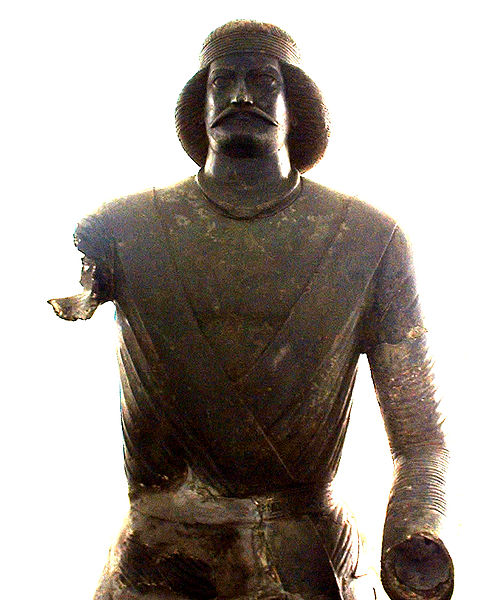What you have failed to see is that the mound of hair on that statue is like a large beetle-shaped mound, facilitated by the tight wrapping of his fillet. If you want something remotely similar to "princess Leia", one could rather look at Sinatruces of Hatra:
For the record, there is nothing effeminate about that hairdo. I'd rather have my do like the Partho-Sassanians, than this post-modern bullshit:
As for prevalence in blondism, I'd like to see these articles in question and investigate them for myself. Colour plates are not peer-reviewed scholarship and indeed, if they were to be taken at such face-value I've seen Achaemenians and Sassanians also portrayed as blondes; now certainly there is blondism, and an amply significant body of individuals with green or blue eyes and tendencies to grow reddish hair, like myself along with a fair complexion, but to suggest that blondism was predominant or that "black hair" (Let's dismiss anthropological factors for now) did not exist amongst the Parthians is to however come to original conclusion which I have not seen before. What do you mean by "Parthian" for instance? The royal Arsacid clan/Pârnî? The ancient satrapy of Parthia itself? The entire empire which consists of several diverse peoples, clients and sub-kingdoms? You have to be very specific about the nomenclature.
Here at EB, we decided to make use of a full spectrum, portraying all from flaxen-haired, fair-skinned to dark-haired and swarthy Parthians, with a mid-range of fair compexion and dark hair being most predominant. If you study Caucasoid features in much closer detail, one will notice that recessive-dominant gene allocation and distribution to hair or eyes, or the skin-pigmentation have relatively little to do with skeletal structures.
Iran's Mandaean population account for one of the country's most ancient minorities with their earliest origins from the Arsacid era, from which the original Judaean diaspora missioned for their creed to attract Chaldaean and Iranic converts. There are reported cases of blondism, reddish hair and blue to green eyes, but the vast majority brandish dark hair, and the complexion of their skins are divided between quite fair to somewhat swarthy. These are not news, Lady E.S. Drower published this study on Iran's Mandaeans over 40 years ago and remarked several times they might hold an anthropological clue that could complement that of the Zoroastrians.
Furthermore, quite recently a few mummified specimen dated to the Parthian era were excavated near an abandoned salt-mining shaft outside of Tehran. Due to a natural bleaching process any preserved hair will come out as flaxen (Mistakenly cited by some as "proof"), but if sampling and investigation of the biological material will prove successful, many fresh clues are bound to be unveiled.
By the way, a word of warning. When you say that you have read "articles" about the subject, I could only fear the worst. If you've bumped into a spamming bloke who goes under the name of Oslonor, there is no more hearty recommendation I can give than to just look somewhere else. It has been established that Iranians have clear distinctions from other "Oriental" cultures such as that of Turks or Arabs, culturally, historically, linguistically and ethnically... But trying to turn them into North-western Europeans just won't cut it for me.
All in all, I don't mind blondism in Parthians at all, in fact it must be highlighted, but certainly not from your original outlook. Diversity, not exclusion.






 Reply With Quote
Reply With Quote






 (You might want to change that passage)
(You might want to change that passage)








 " -alBernameg
" -alBernameg

Bookmarks